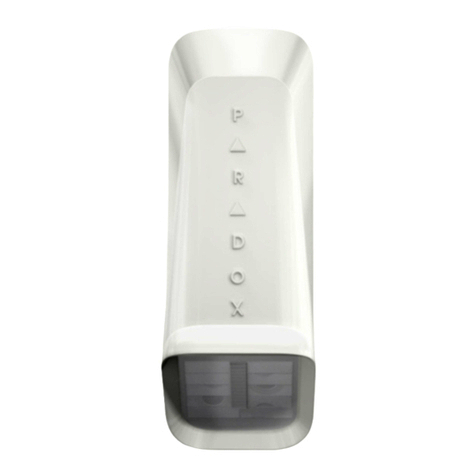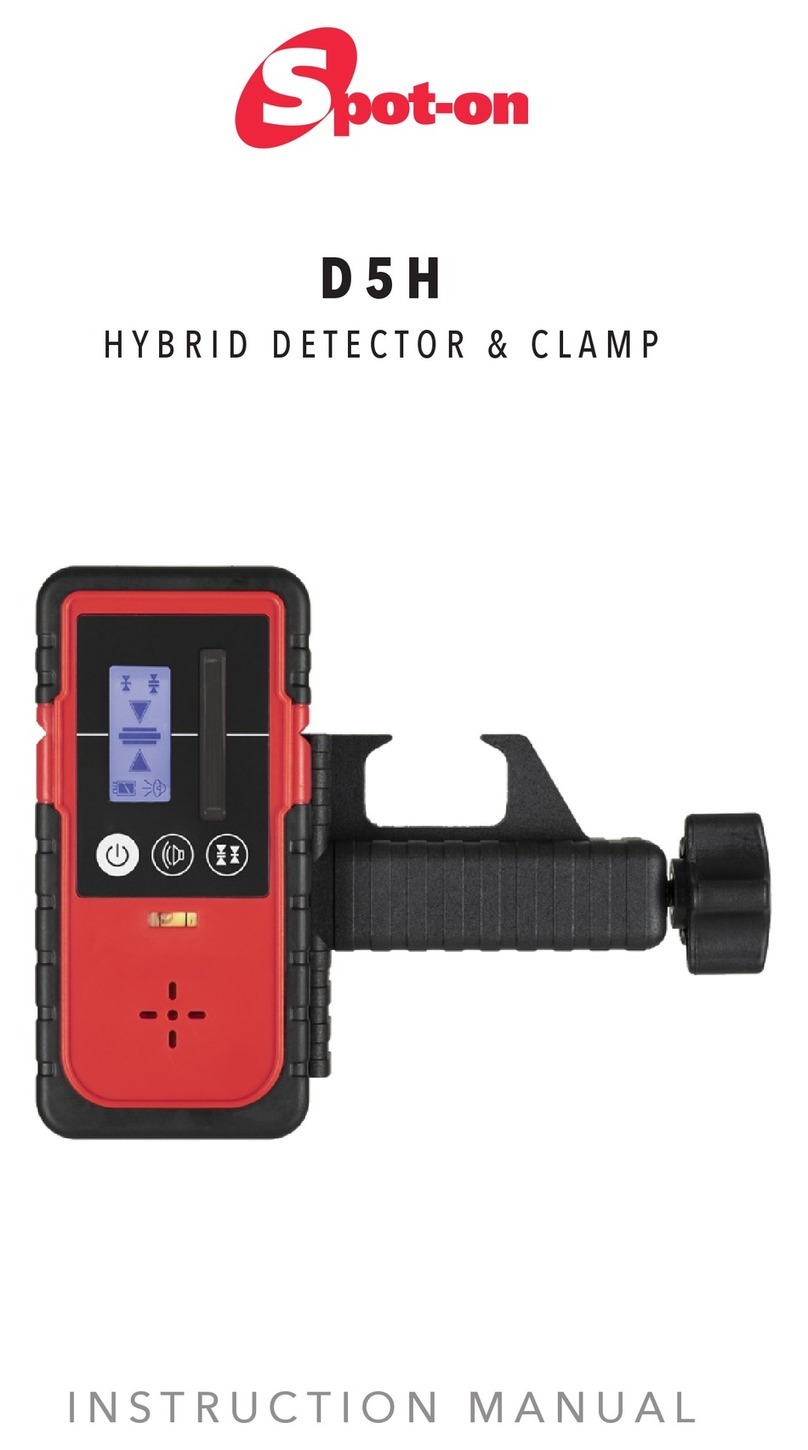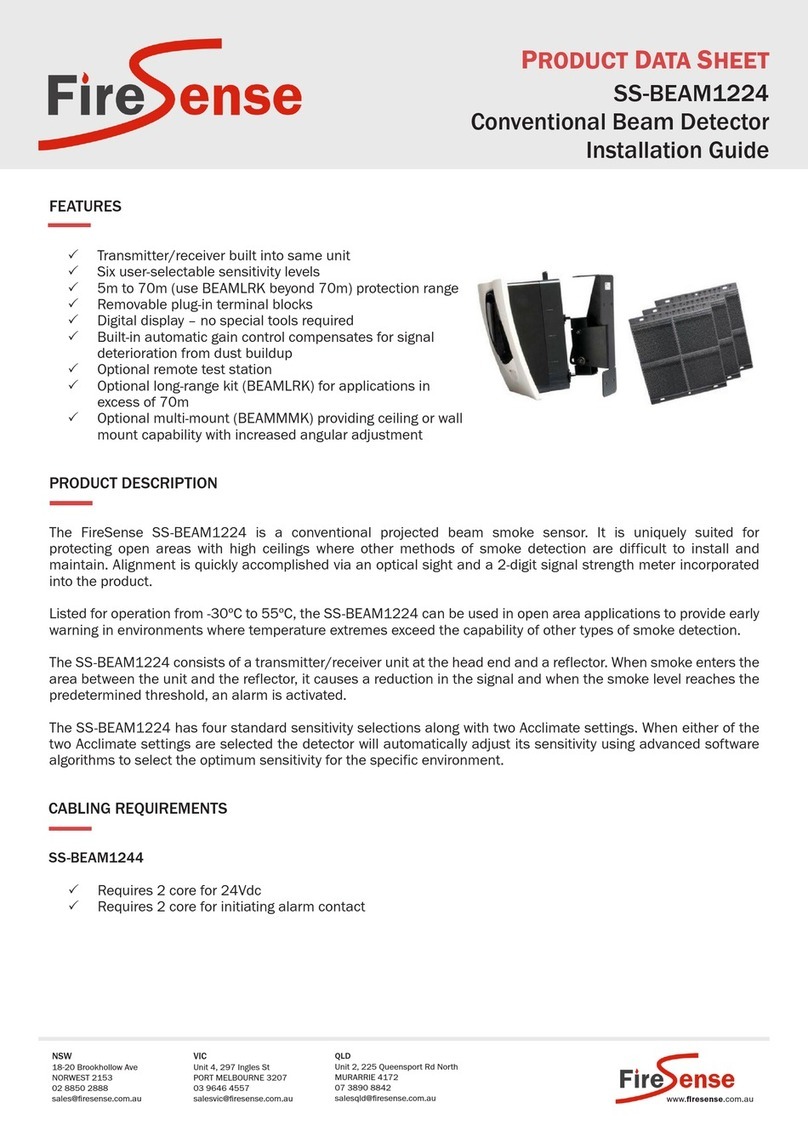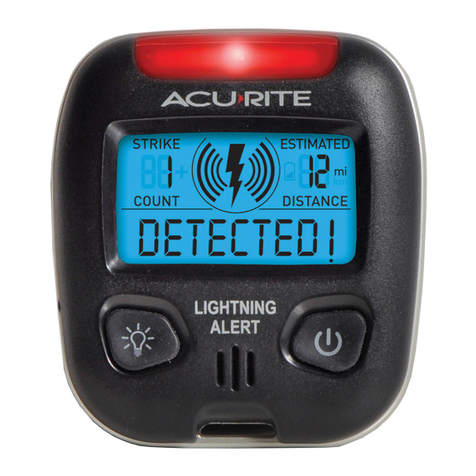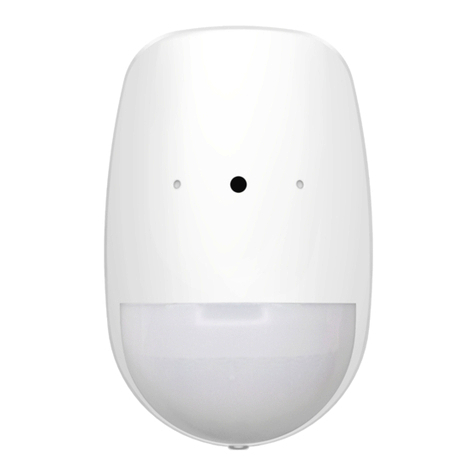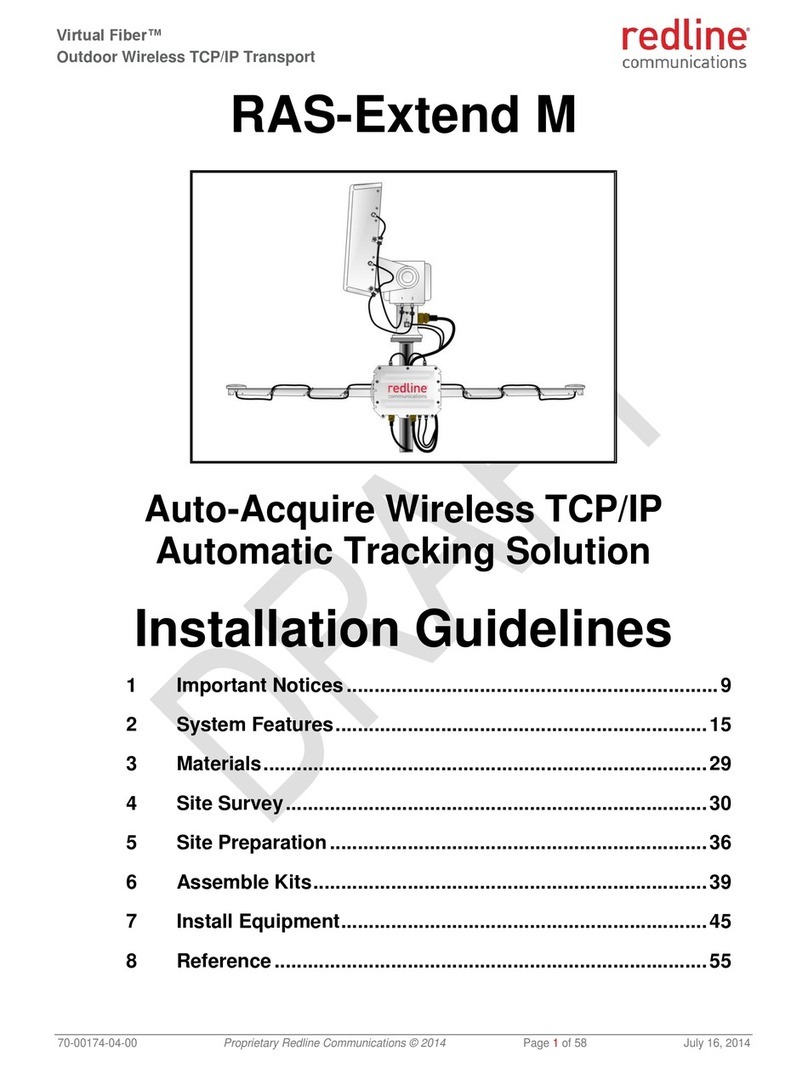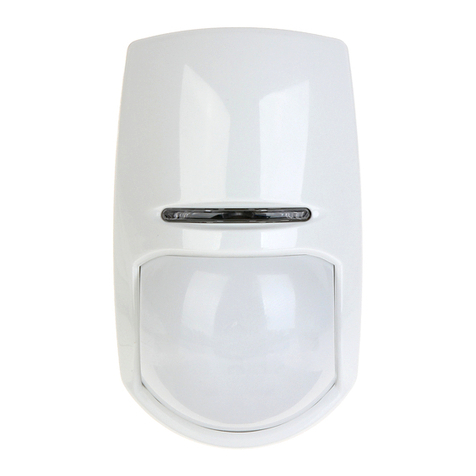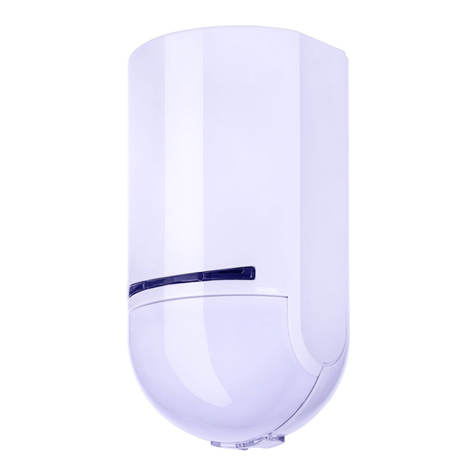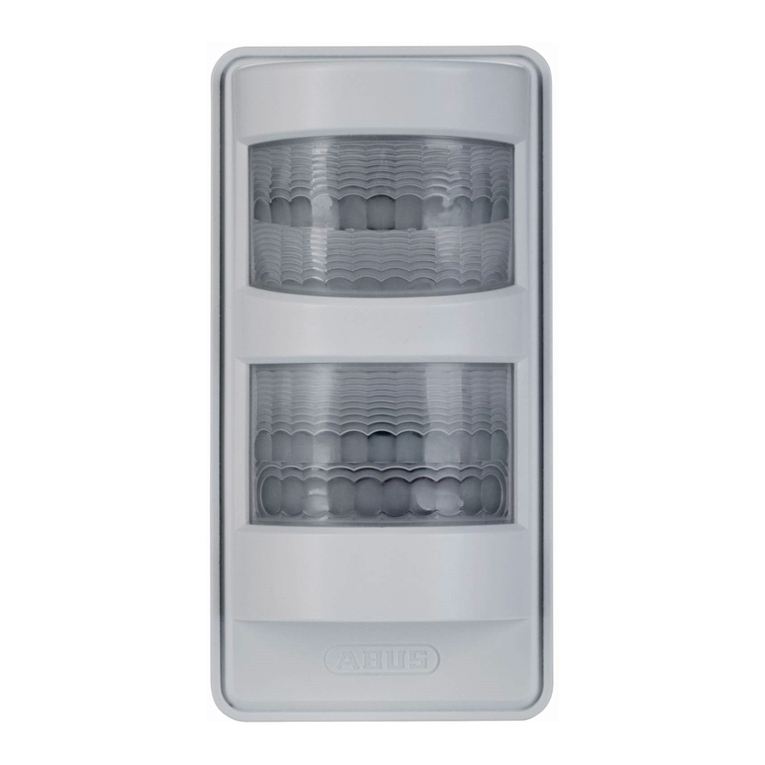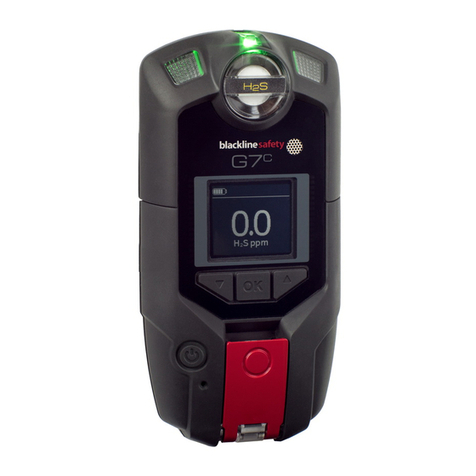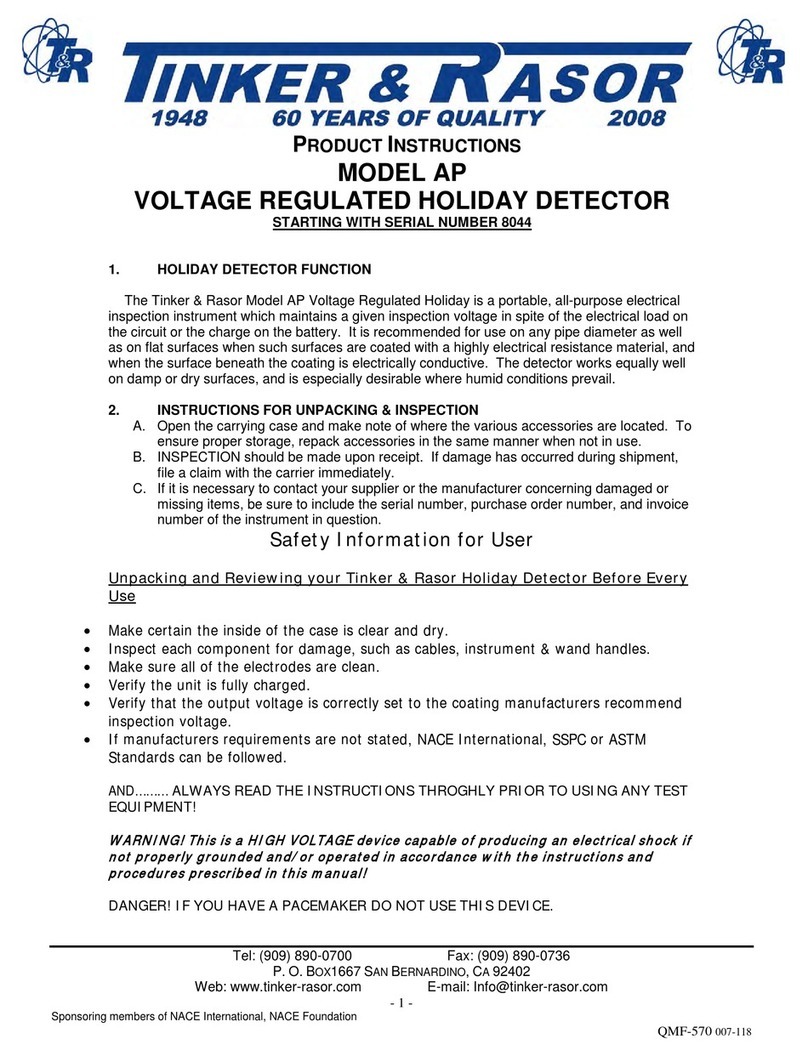TECHNI-PRO TNP801 User manual

Operating Instruction for
Non-Contact AC Voltage Detector
12
1. WARNINGS
• Check on a known live source within the rated AC voltage range of the tester before use to ensure it is in working
order
• The tester'
• Read andunderstand and follow safety rules and operating instructions in the manual before using this tester.
s safety features may not protect the user if not used in accordance with the manufacturer’s instructions.
.
• Do not use if the tester appears damaged or if it is not operating properly. If in doubt, replace the tester
• Insulation type and thickness, distance from the voltage source, shielded wires, and other factors may affect
reliable operation. Use other methods to verify live voltage, if there is any uncertainty.
.
• Do not use on voltages that are higher than as marked on the tester.
• Use caution with voltages above 30 volts AC as a shock hazard may exist.
• Comply with all applicable safety codes. Use approved personal protective equipment when working near live
electrical circuits-particularly with regard to arc-flash potential.
• Do not operate tester if Low Battery warning occurs. Replace batteries immediately.
2.International Safety Symbols
Potential danger. Indicates the user must refer to the manual for important safety information.
Indicates hazardous voltages may be present.
Equipment is protected by double or reinforced insulation.
3.General Specifications
Voltage Detection Range
Frequency Range
Batteries
Operating Temperature
Storage Temperature
Humidity
Altitude
Pollution Degree
Safety Compliance
IP Rating
Dimensions
Weight
100V to 1000VAC, 12V to 1000VAC
50/60Hz
Two AAA 1.5V batteries
0 to 50°C (32 to 122°F)
-10 to 60°C (14 to 140°F)
80% max.
2000 meters
2
CAT IV 1000V
IP67
157 x 26 x 23mm (6.18 x 1.02 x 0.90in)
57g (2.0oz)
4.Detector Description
1-Screw on Battery Cover
2-Flashlight Button
3-Range Select Button
5.Operation
5-1.Turning the Tester On and Self-test
Momentarily press the tester On/Off button, the tester willperformaself-test.
Self-test pass:
• The beeper will beep once and the range LED will flash twice rapidly to indicate that the tester is on and ready for
use.
every self-test pass.
• The tester will self-test every five seconds with AC voltage out of range, the range LED will flash twice rapidly
Self-test fail:
not work.
• Momentarily press the ON/OFF Button, The tester will beep twice and all indicator LED will turn off to indicate
that NCV function is off.
5-3.T
• The beeper will beep and all indicator LED will flash five times, and then turn off to indicate that the tester can
Theself-testfunctionmakes iteasytotell ifthetesteris innormalworkingcondition orcannotwork.
5-2.Turning the Tester Off
urning the Beeper Off
• With the tester off, press and hold the ON/OFF Button until the range LED (green or yellow) is illuminated, the
tester will now operate without the beeper.
• Itisnotpossible toturnthebeeper offwhilethetester isactivated.
4-Tester ON/OFF Button
5-LED Indicators
• Before using tester, (1) Make sure the range LED is glowing, (2) Check tester on a known live AC voltage that is
within the defined detection range of the tester.
6-Detector Tip
7-Flashlight
8-Worklight
7
8
1 2 3 4 5 6
5-4.Verify Operation

Rev.200612
3
4
5-5.High Voltage Mode (100V to 1000VAC)
• If the tester detects voltage within the defined detection range, the tester will light a steady red LED and the beeper
will beep rapidly
• The green range LED indicates that the tester is working in High Voltage Mode. While the tester is on, place
the tip of the tester near an AC voltage.
.
5-6.Low Voltage Mode (12V to 1000VAC)
• If the tester detects voltage within the defined detection range, the yellow LED will turn off, the red LED will flash
•The yellow range LED indicates that the tester is working in Low Voltage Mode. While the tester is on, place the
tip of the tester near an AC voltage.
and the beeper will beep.
• The flash rate and beeping rate will increase as the tester gets closer to the voltage source.
• If the tester detects high voltage, the red LED will change to a steady glow and the beeper will beep rapidly.
5-7.Change Voltage Range Mode
•Press the “R” (Range) Button when the tester is on and in NCV mode. The tester will change the voltage range
mode between low voltage mode and high voltage mode.
5-8.Low Batter
•The yellow range LED indicates the tester is working in Low Voltage Mode. The green range LED indicates the
tester is working in High Voltage Mode.
y Indication
• Replace the batteries if the range LED does not turn on.
• When the tester is on and the batteries are too low for reliable operation, the beeper will beep three times and the
range LED will turn off indicating the tester is not operational.
• Replace the batteries to restore operation.
5-9.Auto Power Off
• To conserve battery life, the tester will automatically turn off after approximately 5 minutes of inactivity.
• When powering down, the beeper will beep twice and all LED will turn off.
5-10.Flashlight
• Momentarily press the Flashlight button to turn the flashlight on or off.
• To conserve battery life, the flashlight will automatically turn off after approximately 5 minutes.
• The beeper will beep twice as the flashlight turns off.
5-11.Worklight
• Press and hold the ON/OFF button for approximately two seconds when the tester is in NCV mode. The tester
will turn the work light on or off.
6.Changing Batteries
1.Carefully unscrew battery cap at the rear(flashlight end)of the tester.
2.Replace batteries with two AAA 1.5V batteries. Observe polarity.
3.Carefully align cover with tester as shown below.
4.Screw cover onto tester until it feels tight. Do not use excessive force.
5.Verify operation by using the tester on a known live AC voltage within the defined detection range of the tester
• The status of the work light can only be changed by a long press of the ON/OFF button
NOTE: The tester cannot determine the actual voltage. The voltage level where the tester switches from the low to
high voltage mode is affected by insulation type and thickness, distance from the voltage source, and other factors.
.
7.Care and Maintenanc
NOTE: When batteries are loaded for the first time, please remove the white, rectangular security strip before
installing batteries.
NOTE: When replacing the batteries, be sure to secure the cap firmly to maintain IP67 water and dust protection.
Aloose or overtightened battery cap may compromise water and dust protection.
e
• Wipe the dirt with a soft cloth dampened with pure water
• Do not immerse the instrument in water.
.
• Do not use aggressive cleaning agents or solutions.
• Do not mix different types of batteries such as alkaline, carbon-zinc, or rechargeable batteries.
• Handle the instrument with care.
• Please take out the battery when the instrument is not used for a long time.
Observe correct polarity
when installing batteries.
Push IN and Rotate Cap
back onto Tester Body
End of the Tester Cap with springs to align
Popular Security Sensor manuals by other brands
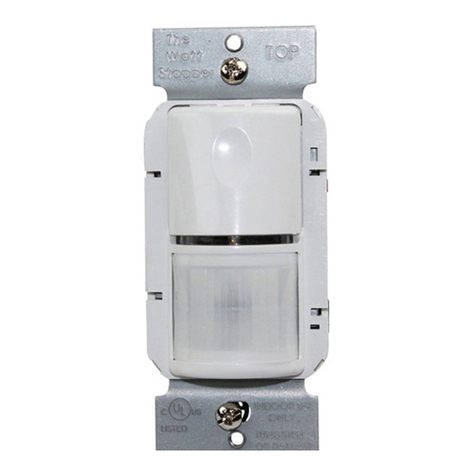
wattstopper
wattstopper WS-250 installation instructions
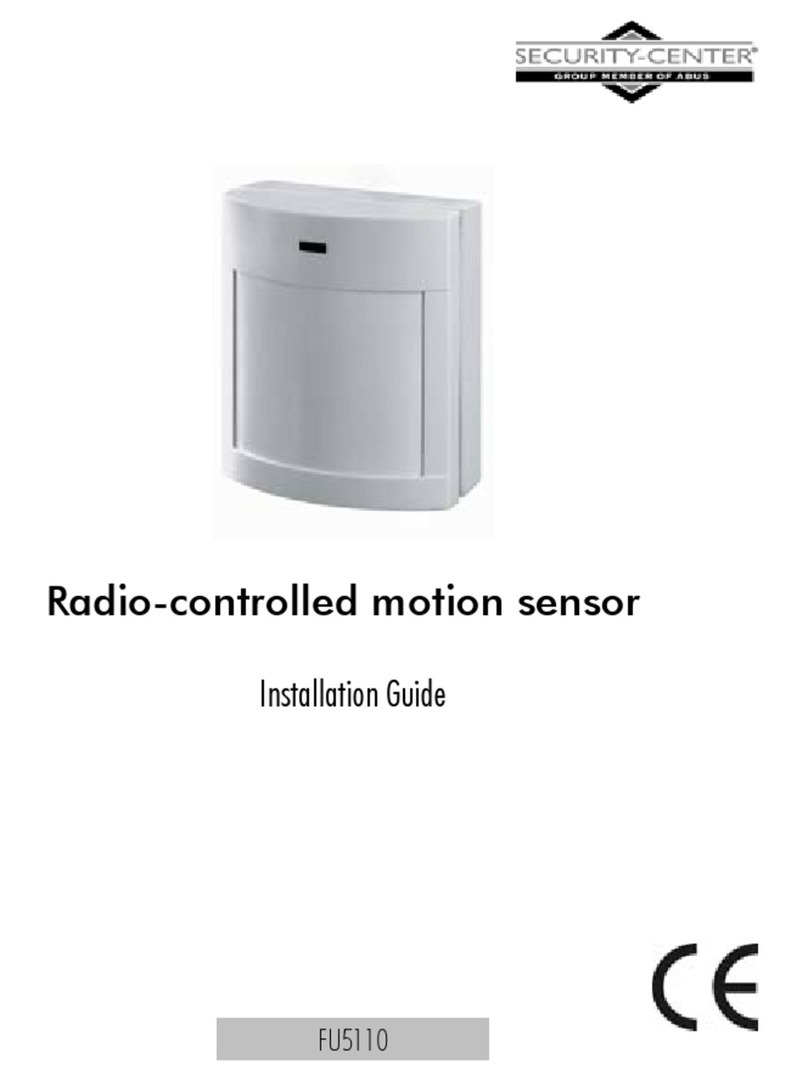
Abus
Abus FU5110 installation guide
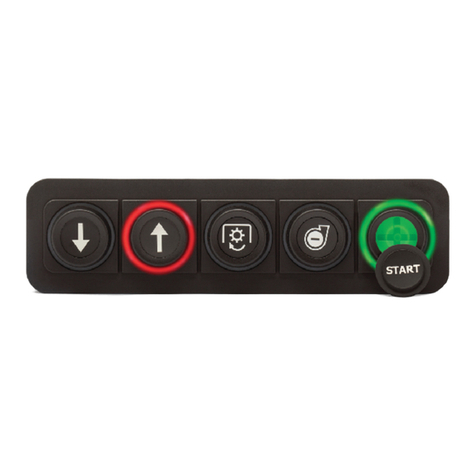
B-Link
B-Link PKP-1500-LI user manual

TECHNO-AC
TECHNO-AC Success AG-309.15 N operating instructions

Blackline Safety
Blackline Safety G7 BRIDGE Technical user's manual
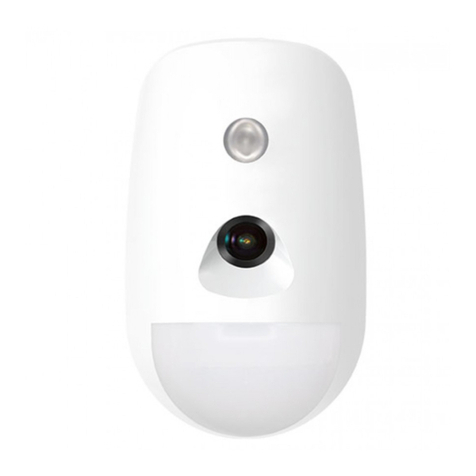
HIK VISION
HIK VISION DS-PDPC12PF-EG2-WB quick start guide
